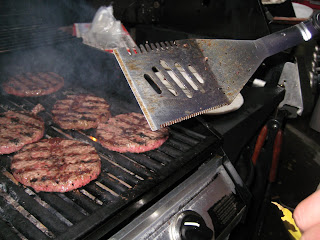
I'm very excited to be participating in a talk and workshop with Chris Ware, a cartoonist who's coming to SNC as part of the "Writers in the Woods" series hosted by the Humanities department. Ware has been a real inspiration for me as an artist – I think he's one of a handful of graphic novelists who have not only produced interesting work, but actually moved the medium of comics forward – pushing the boundaries of what seems possible. I'll be talking with him in an interview format on Friday evening, and running the workshop with him on Saturday morning. The talk is free and open to the public; the workshop is free for faculty and students, $50 for everyone else.
Here's the "Writers in the Woods" blurb:
Please join us for the last Writers in the Woods events of the semester. Graphic novelist Chris Ware will give a talk Friday, November 4 at 7PM in TCES 139. Hot and cold appetizers and wine will be served. The event is free and open to the community.
Saturday, November 5, Ware will lead a workshop from 9AM-Noon in TCES 139. The workshop is free to students and faculty. $50 for community members. Students may take the workshop for credit. These events will be of special interest to students studying art, literature, creative writing, media studies, journalism, and popular culture.
CHRIS WARE is the author of Jimmy Corrigan: The Smartest Kid on Earth and the annual progenitor of the amateur periodical the ACME Novelty Library. An irregular contributor to The New Yorker and The Virginia Quarterly Review, Ware was the first cartoonist chosen to regularly serialize an ongoing story in The New York Times Magazine, in 2005-2006. He edited the thirteenth issue of McSweeney's Quarterly Concern in 2004 as well as Houghton Mifflin's Best American Comics for 2007, and his work was the focus of an exhibit at the Museum of Contemporary Art in Chicago in 2006.

Workshop: Storytelling through Diagrams
A workshop with graphic novelist Chris Ware and and Sierra Nevada College Professor of Digital Art Chris Lanier
Chris Ware has often used diagrams as a storytelling device in his graphic novels – showing events taking place in a cutaway view of an apartment building, for instance, or using a medical diagram of a character as a jumping-off point to narrate her personal history. In this workshop, we'll look into Ware's techniques of "diagrammatic storytelling," and collaborate on a large scale narrative diagram, creating something that's partway story and partway map.
Since it's Halloween today, I thought it'd be appropriate to link a story Ware did for the New Yorker a couple years ago, which takes place on Halloween – click for larger versions of the pages:


Ware has also worked in other media – collaborating with animator John Kuramoto on some shorts for the "This American Life" TV show:
He's also created an interactive comics story for the McSweeney's app, called "Touch Sensitive" – more info on that here:
http://www.fastcodesign.com/1665117/chris-wares-ipad-only-comic-touch-sensitive-perfects-the-form
And if you still haven't gotten enough, here are links to a couple articles I've written about his work, for the Comics Journal and, many many moons ago, the San Francisco Chronicle Book Review:
http://classic.tcj.com/tcj-300/tcj-300-acme-novelty-library-19-reviewed-by-chris-lanier/
http://articles.sfgate.com/2000-11-26/books/17667810_1_panels-new-graphic-novel-jimmy-corrigan









































